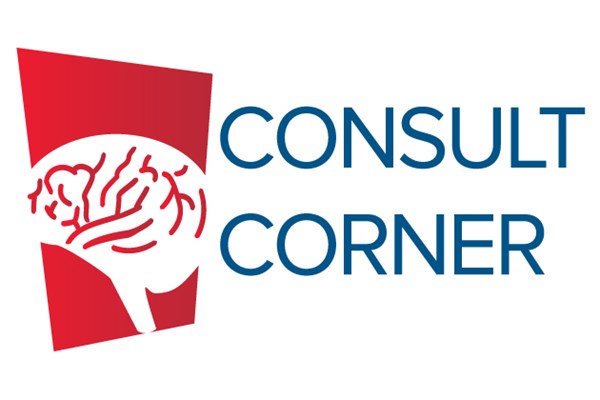Brendan Eby, MD, of Washington University in St. Louis shares insight on how to best collaborate with your neurology colleagues.
What is the most effective way to present a neurology consult over the phone?
Start with a specific question. Neurology is a broad field that spans the brain to the peripheral nerves. Nailing down a discrete problem to address helps us frame the rest of your information. Next, neurologists usually like a fairly detailed history. Always try to ask about onset, timeline, recent medication changes, and any prior visits for similar neurologic complaints (brief chart reviews can be extremely valuable). Lastly, ALWAYS include your exam. Even a completely normal exam has important diagnostic implications. Also, this way, we can potentially make imaging recommendations up front.
What basic workup do you prefer to be completed prior to placing a consult?
This might go without saying, but if there is concern for a central process in the brain, get a head CT. While not always sensitive, it is a quick and easy way to rule out major abnormalities.
For most problems, particularly nonspecific or subjective complaints (altered mental status, spells, worsening of baseline deficits), get basic lab tests (CBC, BMP, UA, and drug screen). Common systemic illnesses must be ruled out before more extensive testing like MRI, EEG, and lumbar puncture.
If the patient is on any relevant medications, try to obtain drug levels to check for adherence and toxicity.
What do you consider to be emergent consultations?
Obvious emergencies:
— Stroke: Most hospitals have a Code Stroke, which should be used accordingly. Make sure you get the Last Known Normal (as opposed to when they were found abnormal), as this will be the most important first piece of information.
— Status Epilepticus: A single seizure is not an emergency. However, if they are continuing to seize, benzodiazepines are clearly first line.
Less obvious emergency:
— Neuromuscular Respiratory Distress: Patients with myasthenia gravis and Guillain-Barré Syndrome can develop diaphragmatic weakness and tank fast. In addition, they might not look like your typical respiratory patients because they are too weak to become tachypneic. For all patients with myasthenia and facial/swallowing complaints, obtain a Forced Vital Capacity and Negative Inspiratory Force, and watch them closely.
What are some common procedures that an EM resident should feel comfortable with managing in the community?
Lumbar Puncture (our only real procedure): We do these very commonly, and generally we do not feel it is a big deal. However, it is critical to rule out possibly life-threatening disorders (meningitis, subarachnoid hemorrhage, etc.) A lot of extra work can be avoided by being comfortable with performing the LP in the ED.
Neuro Exam: I know it's not a procedure, but it really is important, because objective findings (weakness, ataxia, cranial nerve palsies) can be as diagnostic as LP results and head CTs. More important, when you don't feel confident about your exam, the consultant is not going to feel confident in the consult you are calling.
Consider also some specific exam maneuvers to bolster your point. For instance, the Dix-Hallpike and HINTS tests for vertigo or pronator drift and orbiting for subtle weakness are excellent ways not only to test patients, but to demonstrate to your neurology consultant that you are being thorough, thoughtful, and trustworthy in your information.
Top 3 ED pet peeves?
1) Not doing an exam: It's probably readily apparent by now, but objective exam findings are extremely important. If you haven't even tried an exam, it will feel like you aren't respecting the neurologist's time. No one wants to feel like they are consulted just to do the H&P.
2) Calling about a headache before trying anything: I recommend having at least an initial cocktail that you are comfortable with (like ketorolac and prochlorperazine). Consider asking the patient what typically works. Of course, narcotics are usually not appropriate.
3) Giving benzodiazepines after the seizure stopped: Yes, status epilepticus is an emergency. However, if the seizure is over, the medicine is only going to make the patient sleepy, obscure the exam, and make them take longer to come back around. If you are concerned about another seizure, consider loading them with a true anti-epileptic, like levetiracetam.
Other pearls for emergency
medicine residents?
Call before you sedate the patient. While not always possible, if you're heading toward sedation, intubation, etc., consider a courtesy call so we can get a quick pre-exam. It is perfectly fine if you haven't gotten the whole story.
Photograph, video, or record odd movements and spells (within HIPAA guidelines). A picture is worth a thousand words. If the patient is doing something you know will be difficult to explain over the phone, consider finding a way to record it (work phone, departmental camera, etc.)



